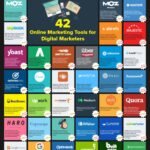Alternatives to FlutterFlow: Top Picks for 2024 App Development
In the rapidly evolving world of app development, the quest for efficiency, speed, and user-friendliness has led to the rise of no-code and low-code platforms. Among these, FlutterFlow has emerged as a popular choice for many developers due to its seamless integration with Flutter, Google's UI toolkit for building natively compiled applications for mobile, web, and desktop from a single codebase. However, as the landscape of app development continues to expand and diversify, exploring alternatives to FlutterFlow becomes essential for developers and businesses aiming to stay ahead of the curve in 2024. This comprehensive guide delves into the top picks for app development platforms that offer unique features, ease of use, and flexibility, catering to a wide range of development needs and skill levels.
- Introduction to No-Code and Low-Code Development
- WeWeb: A Versatile Web App Builder
- Glide: Turning Spreadsheets into Apps
- Wappler: The Power of Visual Development
- Draftbit: Building Mobile Apps Visually
- Bubble: Advanced Web Applications Made Simple
- OutSystems: Rapid Application Development for Enterprises
- Appian: Streamlining Business Process Automation
- BuildFire: Custom Mobile App Creation
- Adalo: Intuitive App Development for Everyone
- Mendix: Accelerating Digital Innovation
- Thrivesoft: A New Player in the Market
- Backendless: Simplifying Backend Development
- AppSheet: Google's No-Code App Building Platform
- Microsoft Power Apps: Empowering Business Solutions
- Voiceflow: Revolutionizing Voice-Enabled Applications
- Conclusion: Choosing the Right Platform for Your Needs
Introduction to No-Code and Low-Code Development
The paradigm shift towards no-code and low-code development platforms has democratized app development, enabling individuals and organizations without extensive coding knowledge to build applications quickly and efficiently. These platforms provide a visual development environment, where users can drag and drop components to design their apps, significantly reducing development time and cost. The appeal of no-code and low-code solutions lies in their ability to bridge the gap between business needs and IT capabilities, fostering innovation and accelerating digital transformation. As we explore alternatives to FlutterFlow, it's crucial to understand the value these platforms bring to the app development ecosystem.
WeWeb: A Versatile Web App Builder
WeWeb stands out as a formidable alternative to FlutterFlow for those looking to create web applications with a no-code approach. It offers a flexible and intuitive platform that caters to both beginners and experienced developers, enabling the creation of responsive and dynamic web apps without writing a single line of code. WeWeb's integration capabilities, including APIs and third-party services, allow for the development of complex applications that can scale as business needs grow. Its collaborative features also facilitate teamwork, making it an excellent choice for projects requiring input from multiple stakeholders.
Glide: Turning Spreadsheets into Apps
Glide presents a unique approach to app development by allowing users to transform spreadsheets into fully functional apps in minutes. This alternative to FlutterFlow is perfect for individuals and businesses looking to leverage existing data within platforms like Google Sheets. Glide's simplicity does not compromise its power; it offers customization options and interactive features that can accommodate various app development needs, from simple projects to more sophisticated applications. Its ease of use and rapid deployment capabilities make Glide an attractive option for those seeking to quickly bring their app ideas to life.
Wappler: The Power of Visual Development
Wappler offers a robust visual development environment that caters to developers seeking a more comprehensive and flexible toolset. As an alternative to FlutterFlow, Wappler provides a bridge between no-code and traditional coding, allowing users to dive into code when necessary. Its wide range of features supports the development of websites, mobile apps, and desktop applications, making it a versatile choice for projects of all sizes. Wappler's emphasis on customization and control appeals to developers who require a higher degree of freedom in their app development process.
Draftbit: Building Mobile Apps Visually
Draftbit is another noteworthy alternative to FlutterFlow, focusing on the visual development of mobile apps. It offers a drag-and-drop interface that simplifies the app creation process, while still providing access to the underlying code for those who wish to customize their applications further. Draftbit's collaborative features and integration capabilities make it an excellent choice for teams working on mobile app projects. Its ability to generate native code for both iOS and Android platforms ensures that apps built with Draftbit deliver a high-quality user experience.
Bubble: Advanced Web Applications Made Simple
Bubble is a powerful no-code platform that enables users to build complex and scalable web applications without needing to code. As an alternative to FlutterFlow, Bubble stands out for its depth of functionality and flexibility, allowing developers to create applications that can handle sophisticated workflows and data manipulation. Its visual programming interface and vast plugin ecosystem make it possible to develop feature-rich applications that can compete with those built using traditional development methods. Bubble's commitment to removing the barriers to app development makes it a compelling choice for entrepreneurs and businesses looking to bring their innovative ideas to the market quickly.
OutSystems: Rapid Application Development for Enterprises
OutSystems is a leading low-code platform designed to accelerate the development of enterprise-grade applications. It offers a comprehensive set of tools and features that support the entire app development lifecycle, from design to deployment. As an alternative to FlutterFlow, OutSystems excels in enabling rapid application development, allowing businesses to respond swiftly to market changes and customer needs. Its robust architecture and security features ensure that applications built with OutSystems are scalable, reliable, and secure, making it an ideal choice for organizations with stringent IT requirements.
Appian: Streamlining Business Process Automation
Appian provides a low-code automation platform that empowers businesses to create apps that streamline workflows and automate business processes. As an alternative to FlutterFlow, Appian focuses on enhancing operational efficiency and improving customer experiences through custom applications. Its drag-and-drop design interface, coupled with powerful integration capabilities, allows for the rapid development of applications that can transform business operations. Appian's commitment to delivering high-quality, scalable, and secure applications makes it a preferred choice for organizations looking to leverage automation to gain a competitive edge.
BuildFire: Custom Mobile App Creation
BuildFire offers a user-friendly platform for the custom creation of mobile apps, catering to businesses and individuals without coding expertise. As an alternative to FlutterFlow, BuildFire simplifies the app development process with its intuitive drag-and-drop interface, while still offering advanced features and customization options for those who need them. Its extensive library of plugins and integrations enables the development of feature-rich mobile apps that can meet a wide range of business needs. BuildFire's focus on simplicity and efficiency makes it an attractive option for those looking to quickly bring their mobile app ideas to fruition.
Adalo: Intuitive App Development for Everyone
Adalo is a no-code platform that democratizes app development, allowing anyone to create visually appealing and functional mobile and web apps. As an alternative to FlutterFlow, Adalo stands out for its ease of use and the ability to build applications without any coding knowledge. Its drag-and-drop interface, combined with a comprehensive set of pre-built components, facilitates the rapid creation of apps that can engage users and drive business growth. Adalo's commitment to making app development accessible to everyone makes it a popular choice among entrepreneurs and small businesses.
Mendix: Accelerating Digital Innovation
Mendix is a low-code platform that empowers organizations to build, manage, and improve mobile and web applications at scale. It offers a collaborative development environment that brings together business and IT teams, fostering innovation and accelerating the delivery of applications. As an alternative to FlutterFlow, Mendix is renowned for its scalability, security, and comprehensive integration capabilities, making it suitable for enterprises looking to drive digital transformation. Its focus on enabling rapid application development without compromising on quality or functionality makes Mendix a valuable tool for businesses aiming to stay competitive in the digital age.
Thrivesoft: A New Player in the Market
Thrivesoft is a newcomer to the no-code and low-code app development scene, offering a fresh perspective and innovative solutions. As an alternative to FlutterFlow, Thrivesoft aims to simplify the app development process with its user-friendly interface and powerful features. Although it may not have the same level of recognition as some of the other platforms mentioned, Thrivesoft's commitment to providing a seamless development experience and its focus on customer satisfaction make it a promising option for developers and businesses exploring new avenues for app creation.
Backendless: Simplifying Backend Development
Backendless provides a comprehensive solution for managing the backend of mobile and web applications, eliminating the need for server-side coding. As an alternative to FlutterFlow, Backendless offers a visual development environment, along with a range of features such as user management, database operations, and API services, that streamline backend development tasks. Its ability to automate and simplify complex backend processes makes Backendless an attractive option for developers looking to focus more on the frontend user experience without compromising on functionality or scalability.
AppSheet: Google's No-Code App Building Platform
AppSheet, acquired by Google, is a no-code app development platform that enables users to create mobile and web apps from data sources like Google Sheets, Forms, and other cloud-based spreadsheets and databases. As an alternative to FlutterFlow, AppSheet emphasizes simplicity and accessibility, allowing users with little to no coding experience to build custom applications that meet their specific needs. Its integration with Google Workspace and other data sources, along with its powerful automation and customization capabilities, make AppSheet a versatile tool for creating apps that improve productivity and streamline business processes.
Microsoft Power Apps: Empowering Business Solutions
Microsoft Power Apps is a suite of apps, services, connectors, and a data platform that provides a rapid application development environment to build custom apps for business needs. As an alternative to FlutterFlow, Power Apps enables users to quickly create apps that connect to business data stored in various online and on-premises data sources, such as SharePoint, Excel, Office 365, Dynamics 365, and SQL Server. Its integration with Microsoft's ecosystem and its focus on empowering users to build apps that solve business challenges make Power Apps a powerful tool for organizations looking to enhance their operational efficiency and digital capabilities.
Voiceflow: Revolutionizing Voice-Enabled Applications
Voiceflow is a platform that specializes in the development of voice-enabled applications for devices like Amazon Alexa and Google Assistant. As an alternative to FlutterFlow, Voiceflow offers a visual design interface that simplifies the process of creating engaging and interactive voice apps. Its focus on voice technology and the growing demand for voice-enabled solutions make Voiceflow a unique and valuable tool for developers and businesses looking to explore the potential of voice in enhancing user experiences and creating new interaction paradigms.
Conclusion: Choosing the Right Platform for Your Needs
The landscape of app development is rich with alternatives to FlutterFlow that cater to a wide range of development needs, skill levels, and project types. Whether you're looking for a no-code solution to quickly turn your app idea into reality, a low-code platform to streamline enterprise application development, or a specialized tool to explore new technologies like voice recognition, there's a platform out there that fits your requirements. The key to selecting the right platform lies in understanding your project goals, the specific features and capabilities you need, and the level of customization and control you desire. By carefully evaluating the alternatives to FlutterFlow presented in this guide, you can make an informed decision that aligns with your development strategy and helps you achieve your app development objectives in 2024 and beyond.



Leave a Reply